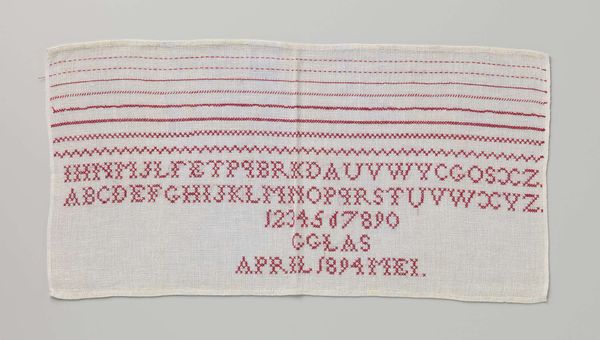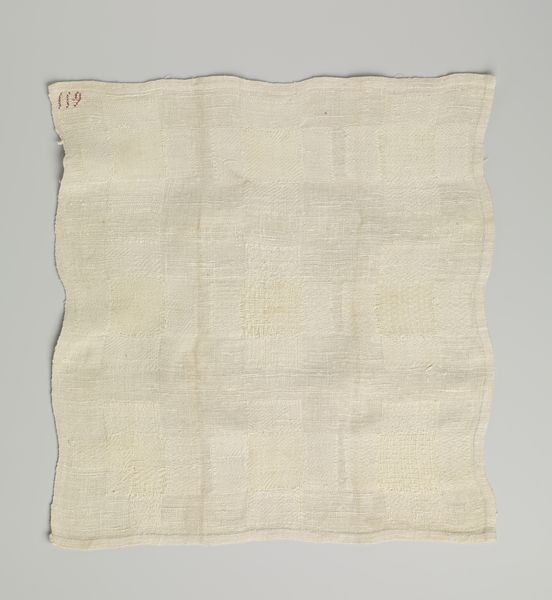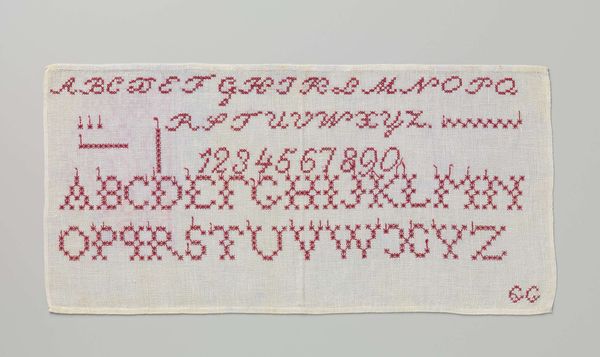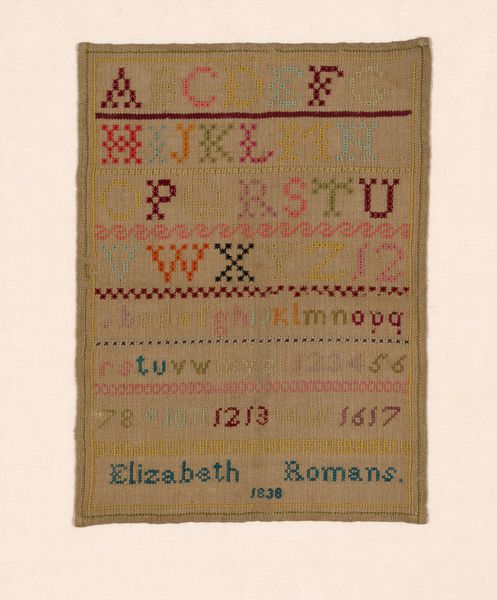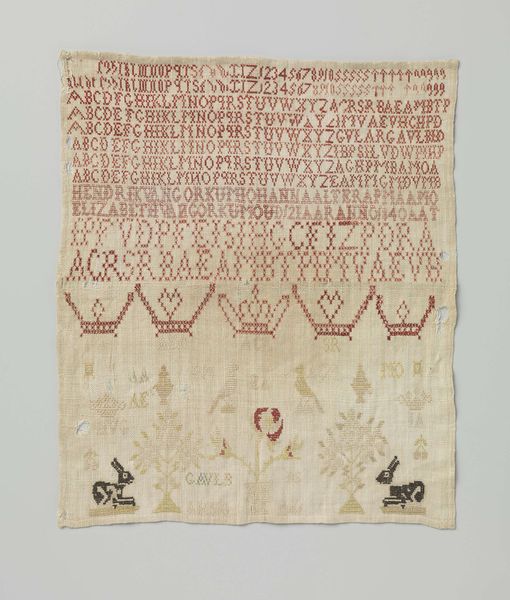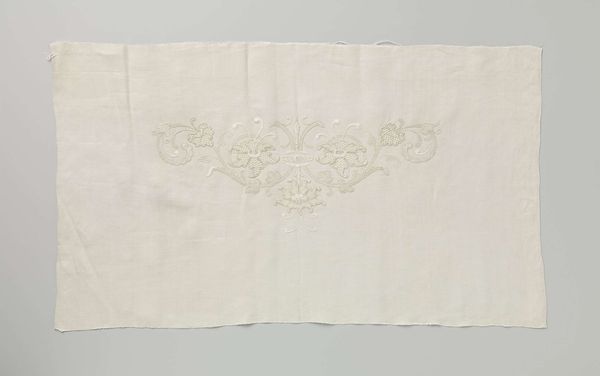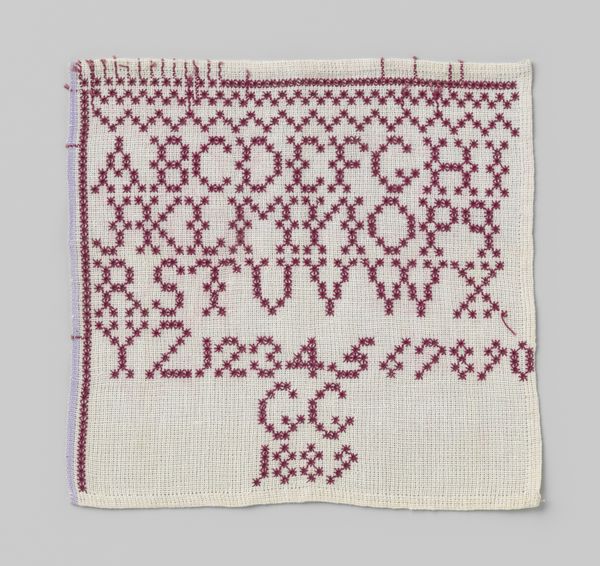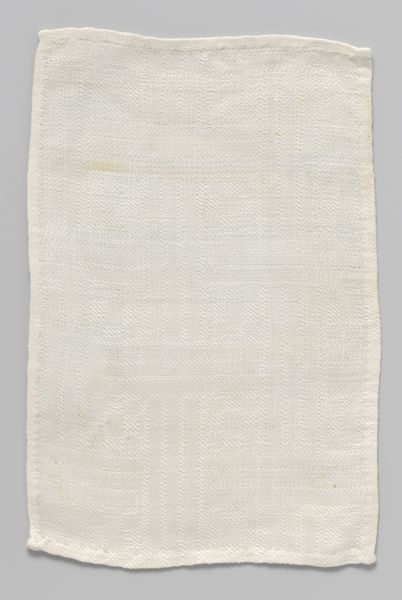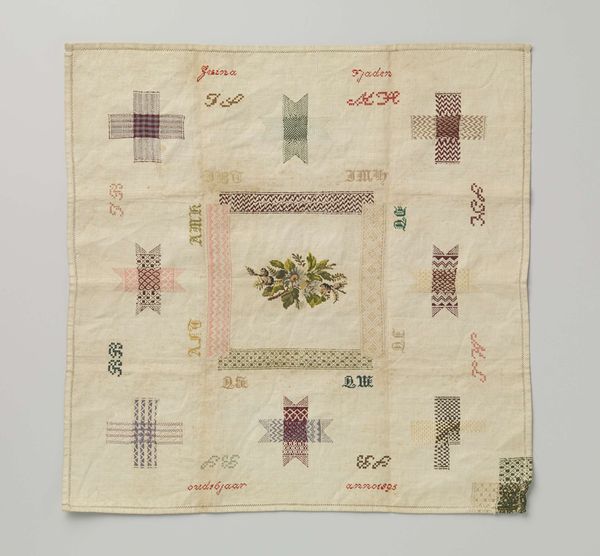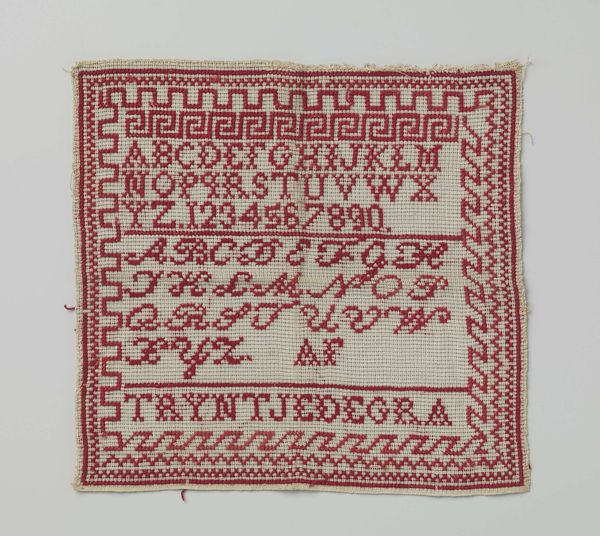
drawing, mixed-media, weaving, textile
#
drawing
#
mixed-media
#
pastel soft colours
#
white and red
#
light coloured
#
weaving
#
textile
#
bright pastel
#
white balance
#
pink and red highlight
#
bright colouring
#
soft and bright colour
#
watercolour bleed
#
imprinted textile
Copyright: Rijks Museum: Open Domain
This linen sampler with red cross-stitched letters, marked "GG", embodies concepts of literacy, skill, and domesticity. The cultural significance of such a piece is tied to the history of education, particularly for girls and young women. In countries like the Netherlands, samplers were commonly made as exercises in needlework and alphabet learning. They served not only to demonstrate proficiency in sewing, a highly valued skill, but also to inscribe the maker's identity through her initials. The act of stitching each letter reflects a broader societal emphasis on female accomplishments within the domestic sphere. This "Merklap" signifies a moment in the education of G. Glas, teaching her the alphabet and the art of needlework. The piece raises questions about the role of women in society and the institutional structures that shaped their education and opportunities. By researching school curricula and domestic practices of the time, we can better understand the social context that gave meaning to this carefully crafted sampler.
Comments
No comments
Be the first to comment and join the conversation on the ultimate creative platform.

